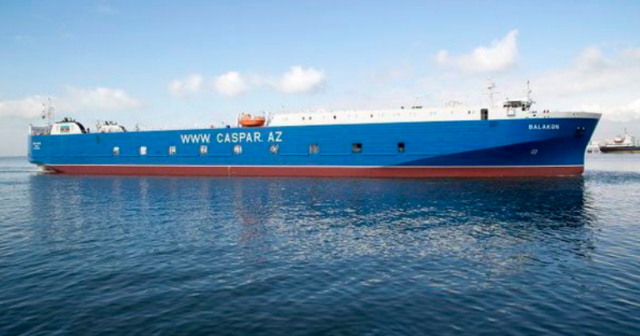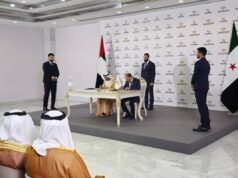The second webinar of the PortNews IAA took place in the new season . The General Director of the Marine Engineering Bureau , Professor, Doctor of Technical Sciences Gennady Egorov made a special report on the topic “All ferries: the Caspian basin” .
The webinar was opened by the Minister of Industry and Natural Resources of the Astrakhan Region Denis Afanasyev, the First Deputy Chairman of the Azerbaijan Caspian Shipping Company (ASCO) Mubariz Jabbarov and the Chairman of the Association of International Freight Forwarders of Uzbekistan, member of the Board of Directors of the International Federation of Freight Forwarding Associations FIATA Khokim Matchanov.
The discussion was attended by the Minister of Industry and Natural Resources of the Astrakhan Region Denis Afanasyev, Chairman of the Association of International Freight Forwarders of Uzbekistan, member of the Board of Directors of the International Federation of Freight Forwarders Associations FIATA Khokim Matchanov, Head of the Department of Operations – Commerce of the ASCO Fleet Ruslan Gurbanov, Project Manager of Morstroytechnology Sofia Katkova, expert, ex – Head of BFI LLC, JSC Russian Railways Andrey Bagno, Deputy Director for Operation of the Makhachkala branch of FSUE ” Rosmorport ” Batyr Dzhamalutdinov, Head of the Metship shipping company Sergey Prusikov, General Director of Prime Shipping LLC Igor Ganin, ex-head of the ASCO Ferry Department Fuad Rasulov.
The webinar was also attended by about 40 specialists from the shipping and shipbuilding industries, mechanical engineering enterprises, financial and leasing companies, design and research institutes.
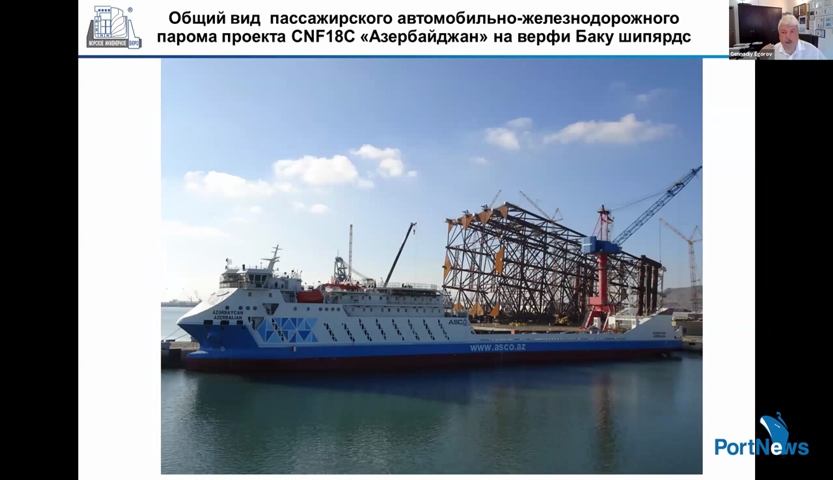
The event aroused great interest among representatives of industry educational institutions – Volga State University of Water Transport, Caspian Institute of Sea and River Transport named after V. General-admiral F.M. Apraksin. The webinar was attended by journalists of PortNews IAA .
Professor Gennady Egorov at the beginning of his speech noted that this is the second webinar, in which the discussion continues about the prospects for ferry and cargo-passenger lines from the Far East to the Baltic Sea, in fact, around Russia.
The ferry theme in the Caspian Sea is very interesting in connection with the development of the international transport corridors “East-West” (aka “One Belt, One Way”) and “North-South”, based on a wide network of railways and highways, which seem to be interrupted by The Caspian Sea. Accordingly, it becomes necessary to transfer goods from one type of transport to another.
The cargo base for the ships of the Caspian region is determined by the special geographical transit position of the great lake-sea and the needs of the Caspian countries – Russia, Azerbaijan, Kazakhstan, Iran, Turkmenistan and some nearby countries – Georgia, Armenia, Turkey, Uzbekistan, as well as India, Afghanistan, Pakistan.
Logistically, the Caspian is unique in that it stretches in the North-South direction for 630 miles, in the East-West direction the width of the sea is about 175 miles.
The distances of the lines are as follows: Baku – Aktau – 253 miles, Baku – Turkmenbashi – 165 miles, Makhachkala – Aktau – 167 miles, Makhachkala – Turkmenbashi – 325 miles, Olya – Aktau – 149 miles, Olya – Turkmenbashi – 370 miles, Olya – Anzali – 478 miles.
The North-South route of international transit cargo from India and the Persian Gulf countries through Iran, the Caspian Sea, Russia to Europe is three times shorter than using the Suez Canal.
In fact, “North – South” (meridional or longitudinal corridor) is a corridor for Iranian and Indian goods, “East – West” (latitudinal or transverse) – for Chinese transit, as well as for goods intended for the Caspian countries, Afghanistan, countries Central Asia and Pakistan.
According to USAID, the movement of goods along the Trans-Caspian International Transport Route (TMTM) – Poti (Georgia) – Baku (Azerbaijan) – Kuryk (Kazakhstan) – Uzbekistan – Kabul (Afghanistan) route requires 16 days, through Turkmenbashi – 12 days, and Karachi ( Pakistan) – Kabul – 25 days.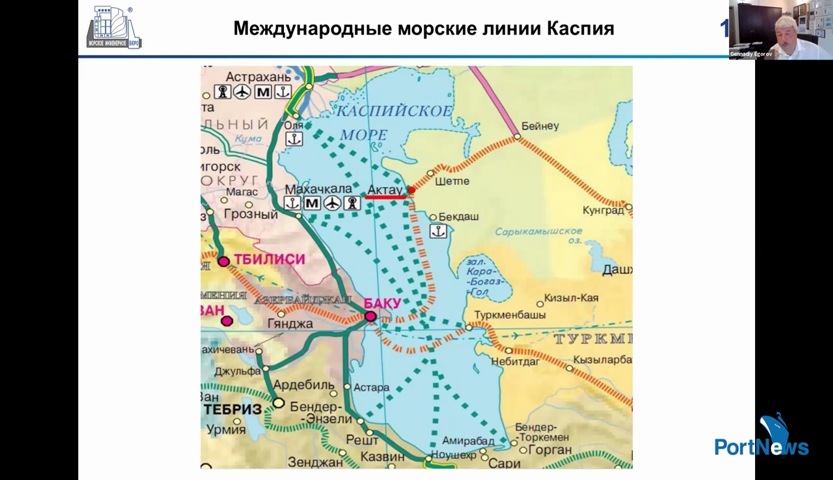
Another example: Tashkent – Varna. Along the Southern Sea Route, via Shanghai – 20 thousand km, via TMTM – 4400 km.
Speaking on April 27, 2019 at the round table of the One Belt, One Road forum, Russian President Vladimir Putin noted: “New prospects are opening up with the formation of the North-South transport corridor with a length of over seven thousand kilometers. Within its framework, both rail and road communications will be established, which will significantly speed up cargo transportation from South Asia through Iran, Azerbaijan and Russia to Europe.
Thus, the point is to develop the all-Russian transport network with an eye to its integration with the transport arteries of the Eurasian states. “
Azerbaijani President Ilham Aliyev also noted that “another important transport project invested by Azerbaijan is the North-South corridor. The countries located along the East-West and North-South transport corridors use the territory of Azerbaijan to transport their goods. Therefore, the investments we have made in the creation of modern infrastructure not only help to increase our economic potential and provide services to our friends, partners and neighbors, it also creates a unique opportunity in the field of trade, tourism, transport, connecting peoples and countries. Countries become connected with each other, which serves the purpose of peace and stability. Thus, Azerbaijan has become an important transit country with a modern transport infrastructure.
The Lapis-Lazuli route put into operation last year, having connected with the Baku-Tbilisi-Kars railway line, further increased the transit potential of Azerbaijan. Today Azerbaijan provides transit opportunities for more and more countries. Azerbaijan has the largest fleet in the Caspian Sea, consisting of 260 vessels; we have put into operation a new international Baku seaport with a cargo handling capacity of 15 million tons of cargo and 100 thousand containers. In the future, its capabilities will be increased to 25 million tons and 1 million containers ”.
On November 5, 2019, the first freight train of the China Railway Express of 21 wagons with a length of 820 m with 42 containers arrived in Turkey by the Baku-Tbilisi-Kars railway, which departed from the Chinese city of Shiyan within the framework of the “One Belt – One Way” project. Then the train reached Europe via the transcontinental underwater tunnel “Marmaray” (under the Bosphorus). In 12 days, he covered about 11.5 thousand km, passing through 10 countries.
The completion of the Baku-Tbilisi-Kars railway within the framework of the One Belt – One Road project has given particular importance to the railway ferry crossings operating in the Caspian Sea (across the Caspian Sea):
• Alat (Baku) – Turkmenbashi (automobile-passenger and railway crossing);
• Alat (Baku) – Aktau (car-passenger and railway crossing);
• Alat (Baku) – Kuryk (car-passenger and railway crossing).
The main cargo transported is railway wagons, as well as road trains, trailers and cars.
These are containers, oil, oil products, petrochemicals, food and agricultural products, building materials, consumer goods, timber and lumber, ferrous and non-ferrous metals, equipment, fertilizers.
The railway car for the post-Soviet countries still serves as an alternative to the container or supplements it – as a unified cargo space. At the same time, the role of road trains continues to grow as a means of fast and reliable delivery of goods.
It should be remembered that the railway gauge in post-Soviet countries is 1520 mm (new “Russian gauge”), in Iran – 1435 mm (“European gauge”), but in the border with Azerbaijan – 1520 mm, with Pakistan – 1676 mm (“Indian track “), in Afghanistan – Termez – Friendship Bridge – Hairaton (1985) – Mazar-i-Sharif (2010) – 1520 mm, in China and Turkey – 1435 mm. As a consequence, a change of wheelsets is required for transit.
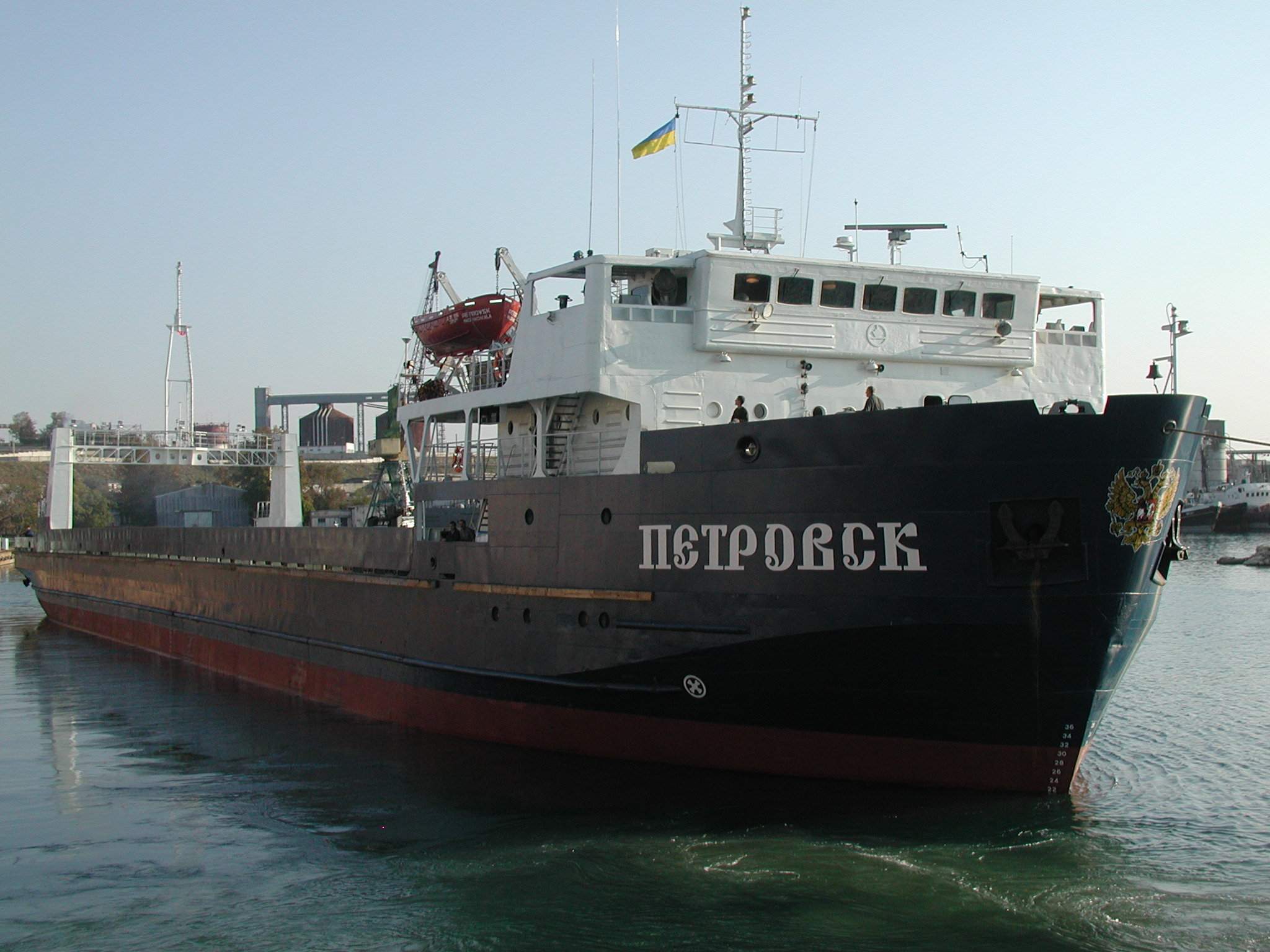
The first railway crossing from Baku to Krasnovodsk (now Turkmenbashi) and Shevchenko (now Aktau) was launched in 1962 with the help of railway ferries of the “Soviet Azerbaijan” type of project 721 for 30 carriages and 290 passengers in cabins. The ships were built in 1962-1968 by the Krasnoye Sormovo shipyard.
In 1959 – 1980 a regular cargo-passenger line Baku – Astrakhan operated, on which two Project 592 passenger ships of the “Kyrgyzstan” type for 250 passengers (“Kyrgyzstan”, “Tajikistan” built by the Baltic Shipyard) operated. This line was presented as a single line Moscow – Baku, with a transfer to “Kyrgyzstan” of passengers from river vessels in Astrakhan. Flights were operated from June to mid-October, every 4 days. The Astrakhan – Guryev (now Atyrau) line also operated from 1964 to 1970 on the Khudat ship (built in 1964 by the Vano Sturua shipyard).
The 24-car ferry of project 002CNF01 Petrovsk of the Anship shipping company opened the first Russian railway ferry service Makhachkala – Aktau on December 3, 2002, Makhachkala – Turkmenbashi – on June 27, 2003. At that time, the transportation of cotton from Central Asia, ammonium nitrate from Novomoskovsk, pipes from Khartsisk, oil coke from Turkmenbashi and other goods were being worked out. However, after the sale of ferries of the Makhachkala type (4 units) in 2011, rail transportation from the Russian port of Makhachkala stopped, a total of 20 thousand wagons were transported.
Terminals in the port of Alat (New Baku Port) – in September 2014. Terminal in the port of Kuryk – in December 2016. A new terminal in the port of Turkmenbashi – in May 2018. In fact, the main Caspian players have upgraded their rail and road terminals. The turn is for Russia and Iran.
In 2017, the port of Baku handled 4.4 million tons of cargo, with transit accounting for 85.7%. The ferry to Alat handled 46679 railway cars, with 45.1% (21062 cars) to Kuryk, 41.8% (19493 cars) to Turkmenbashi, 13.1% (6124 cars) to Aktau. For road trains and cars – 28584, with 65.9% (18840) – at Turkmenbashi, 34% (9716 vehicles) – at Aktau, 28 – at Kuryk. For passengers – 33129 people.
The situation continues to change. In the first 6 months of 2020, the port of Kuryk handled 815 thousand tons of cargo, 5397 road trains and trailers and 512 passenger cars, which is 54% more than in the same period in 2019. In just 15 days of July 2020, the transshipment of wheeled vehicles amounted to 1 233 units.
In 2019, the port handled 1 million 366 thousand tons of cargo (including 8701 road trains and trailers with 235 thousand tons of cargo and 20331 railway wagons). Passengers – 12192 people.
The new car ferry complex in Kuryk can handle 2 million tons of cargo. The design capacity of the terminal for general and bulk cargo is 1.65 million tons per year; for containers – 150 thousand TEUs per year.
Now in the Caspian Sea there are 19 sea ferries (5 projects) in operation. Of these, 13 ferries of three projects (11611-A, 10802E, 0379) are rail freight and passenger. The remaining four ferries of project 161 and two new ferries of project 11612-B are sea car-passenger (cargo-passenger) ferries for transporting passengers and rolling equipment.
As of autumn 2020, the average age of sea ferries (19 units) operating on the lines of the Caspian Sea is 24.6 years.
The average age of sea ferries in the Caspian region with the ability to transport railway wagons (13 units) is 24.4 years.
All railway sea ferries and two car-passenger ferries of the Caspian region belong to the Azerbaijan Caspian Shipping Company.
Railway-car-passenger ferries of the Dagestan type of project 0379 Croatian-built (built from 1984 to 1986, 6 ships in operation) take on board 28 cars and 202 passengers, the length of the track (and for vehicles) is 350 m.
Railway and car ferries of the Makhachkala type of project 10802E of Croatian construction (built from 2005 to 2006, 4 ships in operation) take on board 52 cars, the length of the track is 620 m, for vehicles – 880 m.
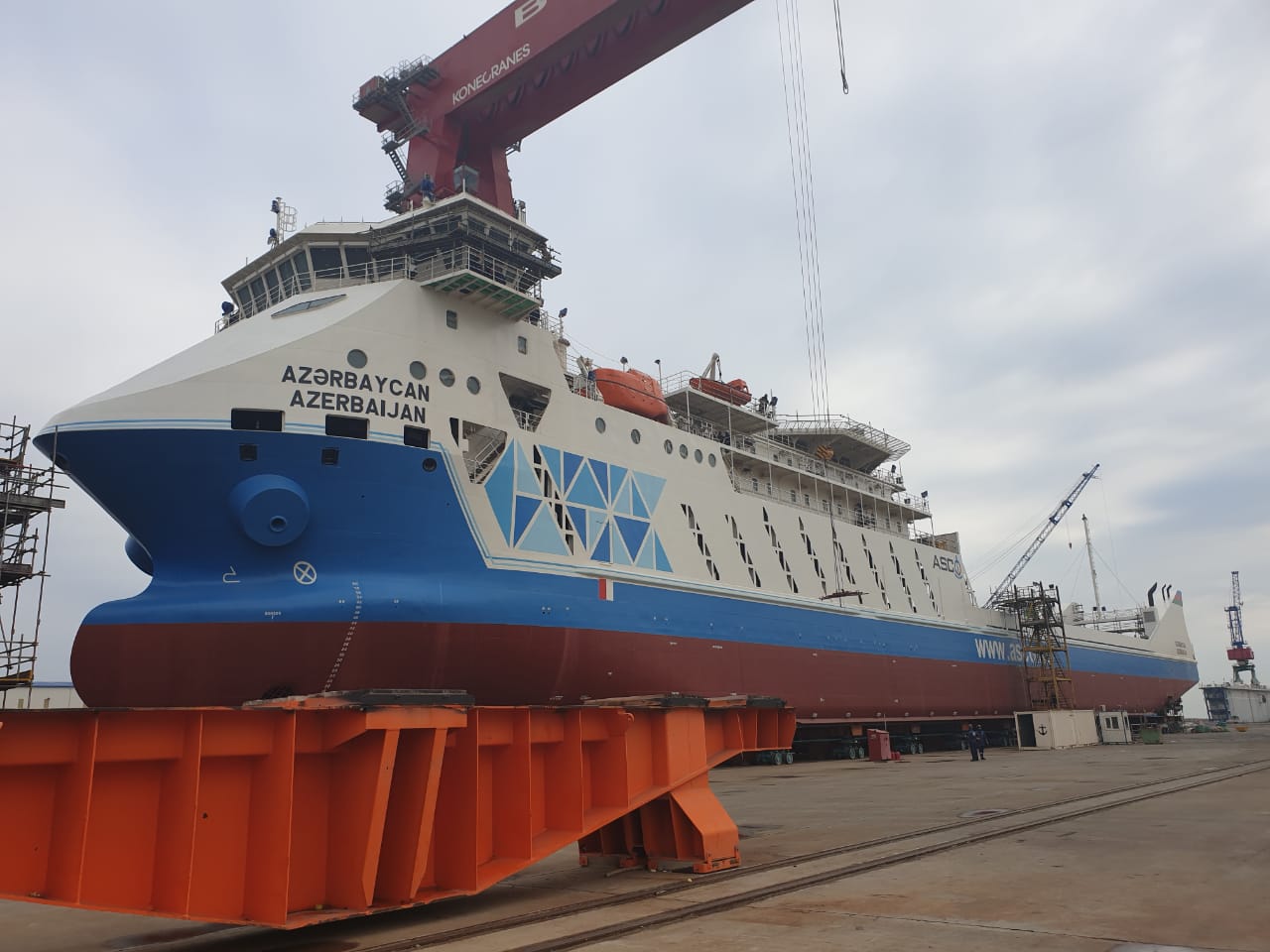
Railway-car ferries of the Barda type of project 11611-A of Croatian construction (built in 2012, 2 ships are in operation) take on board 54 cars, the length of the rail tracks is 640 m, for vehicles – 890 m.
Automobile-passenger ferries of the “Composer Kara Karaev” type of project 161 of German construction (built from 1984 to 1985, two ships in operation) take on board 33 trucks, the length of tracks for vehicles is 713 m. Passengers – 36.
In addition, in the port of Olya, there are two automobile-passenger ferries of project 161 of the TransMorFlot company.
Two motor-passenger (cargo-passenger) ferries of the Berkarar type of project 11621-B operate as part of the fleet of Turkmenistan, Croatian-built (built from 2014 to 2015, two vessels in operation) take on board 54 trucks. Passengers – 200 (64 in cabins, the rest – in chairs).
Research by the Marine Engineering Bureau showed that when creating new ferries for the Caspian, one should proceed from the following principles:
1. The class of the vessel should ensure cost-effective operation on the assigned routes. The ice category is required only if it is operated from the terminals of the North Caspian;
2. The feed meets the dimensions of the coastal bridge and the conditions of the railway terminal (for interface with the ferry bed and pier). The presence of an additional ramp for working with vehicles outside the usual terminals;
3. The choice of the dimensions of the vessel is determined by the place of construction and the proposed route of passage (Volgo-Balt, Volgo-Don), if any;
4. Draft is determined by the depths of the terminal in Turkmenbashi, possibly the port of Olya (if applicable);
5. Maximum placement of railway wagons (on two decks) with the largest dimensions (for example, an open container platform for three TEU), including in height and weight. The presence of a freight elevator for two such cars;
6. Open upper deck, allowing the transport of dangerous goods;
7. Operating speed 14 knots, at a speed of 16-17 knots, fuel costs increase significantly, making it economically impractical to build a vessel;
8. The presence of thrusters in the bow and stern in combination with twin-screw propulsion, which allows, in fact, to position the vessel;
9. The overall longitudinal strength of the hull should allow for rolling operations – rolling out of the VC in two trains in one pass with a minimum amount of parking time and with the fulfillment of all conditions for safe coupling with a coastal ramp of any type in terms of the rail break angle, roll angle and maximum and minimum subsidence of the stern of the ferry at any real possible sea level in the area of the ramp;
10. The cargo must be safely unsecured under any possible conditions of passage, including if there is a forecast error;
11. Local strength of the hull should be ensured by recruiting with a rational distribution and scheme of transferring the load from the cars, as well as taking into account the contact of the structures of the stern end with the coastal ramp.
In 2014, by order of Rosmorrechflot, the Marine Engineering Bureau developed technical designs for railway freight-passenger ferries for the Caspian Sea for the transportation of railway wagons, as well as other rolling cargo, with ice category Ice2 to ensure year-round operation without icebreaker assistance in the northern part of the Caspian Sea in two modifications:
• CNF18A project – passengers (100 people) at the rate of two passengers per one freight road train, can also carry dangerous goods (in fact, a cargo-passenger ship);
• CNF18B project – in addition to carriages and road trains, transportation of passengers-tourists and business passengers (150 people) on their own cars (actually a cargo-passenger ship with a cruise function).
As a result of the simulation of the operation of sea ferries from the Russian ports of the Caspian region on the given lines of operation, carried out by the Central Research Institute of the Marine Fleet, it followed (2014 estimates) that the payback period of capital investments was 11.5 years or less, depending on the vessel load factor. The shortest payback period for ferries on the Makhachkala – Aktau line, the highest on the Olya – Anzali line, which is determined by the difference in the length of the lines (170 and 480 miles) and, accordingly, the lower carrying capacity of ships on the line with a longer range.
On December 13, 2019, the Baku Shipyard in a solemn ceremony launched the newest lead passenger rail-car ferry for the Caspian Sea of the project of the Marine Engineering Bureau CNF18C “Azerbaijan”. President of Azerbaijan Ilham Aliyev attended the ceremony.
Advantages of the new ferry of the CNF18C project in comparison with the existing ones:
• the total capacity for railway cars of T-1 gauge with a length between automatic couplings of 12020 mm – 56 cars (on the existing ones no more than 54);
• rails are recessed into the deck;
• an open cargo deck speeds up and facilitates the process of loading and unloading operations, as well as its presence has a positive effect on the safety of navigation;
• the presence of an on-board ramp for loading and unloading vehicles onto the berths allows working not only on the usual railway berths, but also on ordinary dry cargo berths of sufficient length;
• height of the hold (5400 mm) allows transporting high wagons in the hold (on existing ferries the height of the hold is 5000 mm);
• elevator length 25,000 mm allows loading / unloading of railway trains and rolling cargo with a total capacity of 188 t from the main deck to the lower deck along two tracks, including platforms of type 11-935A 19620 mm long with 3 20-foot containers (on existing ferries, the lift length is 14540 mm, lifting capacity 170 t);
• the ship has space for accommodation and transportation of 100 passengers. The carriage of passengers simultaneously with the carriage of dangerous goods is provided in accordance with the conditions for the carriage of dangerous goods.
Sea areas corresponding to the R2 navigation area on waves with a wave height of 3% security of 7.0 m, with a distance from the refuge no more than 100 miles and with an admissible distance between the shelter no more than 200 miles.
Cargo capacity of the vessel for railway wagons of T-1 gauge with a length between automatic couplings of 12020 mm (4 axles) – 56 units; with a length between automatic couplers 13920 mm (4-axle) – 46 cars; with a length between automatic couplings of 14730 mm (4 axles) – 44 cars. The length of the track is 688 m.
The cargo capacity of the vessel for trucks with a semitrailer 12-13.5 m long is 50 road trains. Linear meters – 900 m.
The upper deck is designed to carry railway tank cars and wagons weighing up to 94 tons on all tracks.
Permissible load of wheeled vehicles per axle: 4 wheels per axle – 12 t; 2 wheels per axle – 10 tons.
For loading / unloading railway trains and rolling cargo from the main deck to the lower deck, a freight elevator on two tracks with a carrying capacity of 188 tons and a length of 25 m is provided.
Passengers are accommodated in 2 improved double cabins with a bathroom and 24 double (convertible into four) cabins with a bathroom. There is a duty-free shop, internet cafe; a room with slot machines with a bar; restaurant for passengers (50 seats); smoking room; in the passenger compartment, devices for installing hanging cradles (3 pcs.); medical premises (medical block) consisting of: a doctor’s office, combined with an outpatient clinic; hospital for one place; insulator for one place.
The vessel is provided with two marine evacuation systems (MES) with closed liferafts and an evacuation sleeve for lowering into rafts (one from each side). The evacuation capacity is 6 minutes !!!
Cruising range of about 2500 miles. The autonomy of the vessel in terms of fuel and oil reserves (in running mode) is 10 days. The autonomy of the vessel in terms of water and provisions is 5 days.
Two MDM diesel engines of 2600 kW at a frequency of 1000 min-1 each, working through reverse gearboxes for 2 fixed-pitch propellers (left and right rotation).
The speed of the vessel when 85% MDM is used is at least 14 knots.
They are used as fuel: for the main engines and the boiler – heavy fuel IFO380 with a viscosity of 380 cSt at 50 ° C.
To improve controllability at low speeds, when passing narrows and when mooring, the vessel has a bow and stern PU of the “screw in a tube” type with a fixed pitch propeller (FPP). Power at the entrance of the PU – 350 kW, propeller diameter – 1090 mm.
Conclusion
The cargo base for the ships of the Caspian region is determined by the special geographical transit position of the great lake – the sea and the needs of the Caspian countries, as well as India, Afghanistan, Pakistan. The peculiarity of the Caspian from the point of view of logistics is that it stretches in the North-South direction for 630 miles, in the East-West direction the width of the sea is about 175 miles.
The North-South route of international transit cargo from India and the Persian Gulf countries through Iran, the Caspian Sea, Russia to Europe is three times shorter than using the Suez Canal.
In fact, “North – South” (meridional or longitudinal corridor) is a corridor for Iranian and Indian goods, “East – West” (latitudinal or transverse) – for Chinese transit, as well as for goods intended for the Caspian countries, Afghanistan, countries Central Asia and Pakistan.
The completion of the Baku-Tbilisi-Kars railway within the framework of the One Belt – One Road project has given particular importance to the railway ferry crossings operating in the Caspian Sea (across the Caspian Sea):
• Alat (Baku) – Turkmenbashi (automobile-passenger and railway crossing);
• Alat (Baku) – Kuryk (car-passenger and railway crossing).
The main cargo transported is railway wagons, as well as road trains, trailers and cars. These are containers, oil, oil products, petrochemicals, food and agricultural products, building materials, consumer goods, timber and lumber, ferrous and non-ferrous metals, equipment, fertilizers.
The railway car for the post-Soviet countries still serves as an alternative to the container or supplements it – as a unified cargo space. At the same time, the role of road trains continues to grow as a means of fast and reliable delivery of goods.
As of autumn 2020, the average age of sea ferries (19 units) operating on the lines of the Caspian Sea is 24.6 years, which is considered a significant age for sea vessels.
On December 13, 2019, the Baku Shipyard, with the participation of President of Azerbaijan Ilham Aliyev, launched the newest passenger rail-car ferry for the Caspian Sea of the project of the Marine Engineering Bureau CNF18C Azerbaijan, which reflects all market trends and ensures the efficient movement of cars and passengers in the direction “East – West”.
Webinar with a report by Professor Gennady Egorov on the PortnewsTV youtube channel >>>> https://portnews.ru/portnewstv/130
* – the presentation of the report contains photographs of the authors: Alexander Rudkov, Arseny Markelov, Valery Mazin, Vasily Kosov, Victor (mv12345), Vladislav Ponomarev, Vladimir Vladislavlev, Vladimir Prokopenko, Evgeny Borodin, Evgeny Kuga, Zakhar Korolev, Lemachko B.V., M. Redkin, Maxim Zamaleev, (hermit), Pavel Emelyanov, R. Dick, Sergey Melnikov, Eduard Sarkisov, Yuri Fomin, Dmitry Podporozhye, etc.
source: portnews.ru



